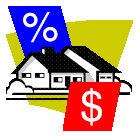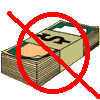FHFA, Fannie Mae and Freddie Mac Announce HARP Changes to Reach More Borrowers
Washington, DC – The Federal Housing Finance Agency, with Fannie Mae and Freddie Mac (the Enterprises), today announced a series of changes to the Home Affordable Refinance Program (HARP) in an effort to attract more eligible borrowers who can benefit from refinancing their home mortgage. The program enhancements were developed at FHFA’s direction with input from lenders, mortgage insurers and other industry participants.
 “We know that there are many homeowners who are eligible to refinance under HARP and those are the borrowers we want to reach,” said FHFA Acting Director Edward J. DeMarco. “Building on the industry’s experience with HARP over the last two years, we have identified several changes that will make the program accessible to more borrowers with mortgages owned or guaranteed by the Enterprises.
“We know that there are many homeowners who are eligible to refinance under HARP and those are the borrowers we want to reach,” said FHFA Acting Director Edward J. DeMarco. “Building on the industry’s experience with HARP over the last two years, we have identified several changes that will make the program accessible to more borrowers with mortgages owned or guaranteed by the Enterprises.
Our goal in pursuing these changes is to create refinancing opportunities for these borrowers, while reducing risk for Fannie Mae and Freddie Mac and bringing a measure of stability to housing markets.” Fannie Mae and Freddie Mac have helped approximately 9 million families refinance into a lower cost or more sustainable mortgage product, approximately 10 percent of those via HARP.
HARP is unique in that it is the only refinance program that enables borrowers who owe more than their home is worth to take advantage of low interest rates and other refinancing benefits. This program will continue to be available to borrowers with loans sold to the Enterprises on or before May 31, 2009 with current loan-t0-value (LTV) ratios above 80 percent.
The new program enhancements address several other key aspects of HARP including:
- Eliminating certain risk-based fees for borrowers who refinance into shorter-term mortgages and lowering fees for other borrowers;
- Removing the current 125 percent LTV ceiling for fixed-rate mortgages backed by Fannie Mae and Freddie Mac;
- Waiving certain representations and warranties that lenders commit to in making loans owned or guaranteed by Fannie Mae and Freddie Mac;
- Eliminating the need for a new property appraisal where there is a reliable AVM (automated valuation model) estimate provided by the Enterprises; and
- Extending the end date for HARP until Dec. 31, 2013 for loans originally sold to the Enterprises on or before May 31, 2009.
An important element of these changes is the encouragement, through elimination of certain risk-based fees, for borrowers to utilize HARP to refinance into shorter-term mortgages. Borrowers who owe more on their house than the house is worth will be able to reduce the balance owed much faster if they take advantage of today’s low interest rates by shortening the term of their mortgage.
The Enterprises plan to issue guidance with operational details about the HARP changes to mortgage lenders and servicers by November 15. Since industry participation in HARP is not mandatory, implementation schedules will vary as individual lenders, mortgage insurers and other market participants modify their processes.
Borrower Eligibility
In general, borrowers must meet the following criteria:
- The mortgage must be owned or guaranteed by Freddie Mac or Fannie Mae.
- The mortgage must have been sold to Fannie Mae or Freddie Mac on or before May 31, 2009.
- The mortgage cannot have been refinanced under HARP previously unless it is a Fannie Mae loan that was refinanced under HARP from March-May, 2009.
- The current loan-to-value (LTV) ratio must be greater than 80%.
- The borrower must be current on the mortgage at the time of the refinance, with no late payment in the past six months and no more than one late payment in the past 12 months.
Homeowners can determine if they have a Fannie Mae or Freddie Mac loan by going to:
FANNIE MAE LOOKUP or calling 800-7FANNIE (8 am to 8 pm ET)
FREDDIE MAC LOOKUP or 800-FREDDIE (8 am to 8 pm ET)



 Don’t get piggy. Work with us. Set a goal and lock when it gets there. Are we going to hit the bottom? Probably not. Are we going to save you money? Yes. If you can save money with no out of pocket costs, than you have nothing to lose. If you want to gamble go to Las Vegas. It’s a heck of a lot more fun.
Don’t get piggy. Work with us. Set a goal and lock when it gets there. Are we going to hit the bottom? Probably not. Are we going to save you money? Yes. If you can save money with no out of pocket costs, than you have nothing to lose. If you want to gamble go to Las Vegas. It’s a heck of a lot more fun. 
 First, understand that because of the large volume of foreclosed properties, it is a great time to be a buyer, whether you are a move-up buyer or a first-time buyer.
First, understand that because of the large volume of foreclosed properties, it is a great time to be a buyer, whether you are a move-up buyer or a first-time buyer.
 Are No Cost Loans a Deal? For most people, usually not.
Are No Cost Loans a Deal? For most people, usually not.